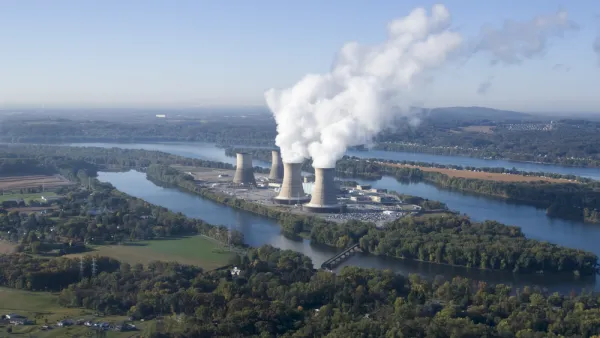The rise is attributed to Asian nations, particularly India and China, where coal-power plants are newer than in the West. It shows a growing disconnect between energy and climate goals, warned the International Energy Agency.

"Fatih Birol, head of the International Energy Agency (IEA), said the growth of coal-fired power in Asia was worrying because the new plants would 'lock in the emissions trajectory of the world, full stop',” report Leslie Hook, David Sheppard and Myles McCormick. The average age of Asian coal plants is 11 years, compared to Western coal plants averaging 42 years. Worse yet, despite being newer, many are less efficient than those used in Europe and the U.S.
“How we are going to deal with this problem is for me the nerve centre of the climate change debate today,” Mr Birol told the Financial Times, adding that the data on energy consumption is moving in “close to the opposite direction” of climate targets.
Energy-related carbon dioxide emissions ticked up 1.4 per cent last year, following several years of staying flat, and are set to rise again in 2018 owing to greater demand for fossil fuels. Asia accounted for two-thirds of the growth in emissions last year.
By contrast, emissions decreased last year in the U.S. by 2.7 percent, largely due to a 4.5 percent decrease in power plant emissions as coal-burning plants shuttered.
Last year China’s coal-fired power generation grew 4 per cent, while India’s rose 13 per cent, according to IEA data. The rate of investment in the construction of new coal-fired power plants, however, also slowed down last year, according to the agency.
Mr Birol said the Asian coal plants were a crucial reason why renewable energy consumption and carbon dioxide emissions were both increasing at the same time. “It’s one of the blind spots of the climate change discussion,” he said.
BP's "Statistical Review of World Energy," released in June, confirms the IEA data.
"The opening of new coal-fired power plants in India and China drove coal consumption higher by 1 percent, highlighting the difficulties developing economies face in meeting demand for electricity while fighting pollution," reported Ron Bousso for Reuters on June 13 on the BP report [pdf].
Page 13 lists coal consumption by country. China's consumption peaked in 2013 and dropped every year until 2017. [Also see "related" posts below.] India, on the other hand, has increased consumption every year since 2007.
[T]he share of [global] coal in power generation today remains around 38 percent, practically unchanged since 1997, while the share of non-fossil fuels slightly dipped as nuclear power capacity shrunk, BP Chief Economist Spencer Dale said.
“This is really worrying,” Dale told reporters in a briefing before the report was released. “How much progress have we made in 20 years? None.”
A final grim note: Feng Hao of China Dialog reports that "CoalSwarm published a report [pdf] on September 26 warning that 259 gigawatts of coal power capacity – equivalent to the entire coal power fleet of the United States – is being built in China despite government policies restricting new builds."
Related in Planetizen:
-
China Cancels 103 Coal Power Plants; Still Has Too Much Coal Capacity, January 20, 2017.
-
China Cutting Carbon, October 1, 2016: China’s coal use and carbon emissions have dropped for the last two years.
-
Peak Coal: China's Carbon Emissions Drop as the Use of Coal Slows, August 10, 2016: China's use of coal peaked in 2014.
FULL STORY: New Asian coal plants knock climate goals off course

Analysis: Cybertruck Fatality Rate Far Exceeds That of Ford Pinto
The Tesla Cybertruck was recalled seven times last year.

National Parks Layoffs Will Cause Communities to Lose Billions
Thousands of essential park workers were laid off this week, just before the busy spring break season.

Retro-silient?: America’s First “Eco-burb,” The Woodlands Turns 50
A master-planned community north of Houston offers lessons on green infrastructure and resilient design, but falls short of its founder’s lofty affordability and walkability goals.

Test News Post 1
This is a summary

Analysis: Cybertruck Fatality Rate Far Exceeds That of Ford Pinto
The Tesla Cybertruck was recalled seven times last year.

Test News Headline 46
Test for the image on the front page.
Urban Design for Planners 1: Software Tools
This six-course series explores essential urban design concepts using open source software and equips planners with the tools they need to participate fully in the urban design process.
Planning for Universal Design
Learn the tools for implementing Universal Design in planning regulations.
EMC Planning Group, Inc.
Planetizen
Planetizen
Mpact (formerly Rail~Volution)
Great Falls Development Authority, Inc.
HUDs Office of Policy Development and Research
NYU Wagner Graduate School of Public Service




























